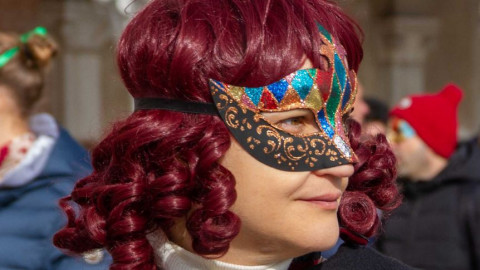
Nick McAllister
The practice of someone being undiagnosed on the autism spectrum and masking their autism is not as uncommon as you might think.
Key points:
- Masking can be a way of "camouflaging" your autism
- People with autism can be motivated to do it fit in
- But it can be damaging in the long term and exhausting to keep it up
For 40 years, I hid my autism from the world as a way of ensuring those around me would accept me.
I mimicked their social interactions and behaviours and sailed through life.
It was not until I reached my forties and got a diagnosis of being on the autism spectrum that I finally knew what I'd been doing was what they class as "masking" or "camouflaging".
Masking or camouflaging is an artificially "performed" social behaviour.

Writer Nick McAllister was diagnosed with autism at the age of 40.(ABC News: Hugh Sando)
Motivations for masking symptoms of autism can include fitting in and increasing connections with others.
Masking itself is comprised of a combination of camouflaging and compensation techniques where the individual can control impulses, rehearse answers to questions or conversations and mimic others.
Why does masking lead to more women getting misdiagnosed?
Because of masking, you may never notice someone is autistic. Therefore, some people may never get diagnosed, or only do so in adulthood.
If so, this could mean there are many undiagnosed adults who may need help.
It could also explain why fewer girls get diagnosed as they usually have more masking behaviours and so may not seem autistic, according to clinical psychologist Suzanne Midford.
Common signs of autism in girls:
- A tendency to mimic others in social situations
- Passivity, often perceived as "just being shy"
- One or few close friendships
- A tendency to "camouflage" difficulties
- Developmentally appropriate language skills
- A vivid imagination
- Less severe and frequent repetitive behaviours
This could lead them to get another diagnosis or fail to be diagnosed at all, she said.
More research is still needed to understand why more males get diagnosed with autism than females.
A meta-analysis published in 2017 in the Journal of the American Academy of Child & Adolescent Psychiatry found there appeared to be a diagnostic gender bias for the condition, meaning girls who met the criteria for Autism Spectrum Disorder were at disproportionate risk of not receiving a clinical diagnosis.
Dr Midford specialises in diagnosing autism and said the disorder's markers were often not detected in girls in early life because they were adept at what is known as "social masking".

Clinical psychologist Dr Suzanne Midford said autism in women can present differently to men.(Supplied: Dr Suzanne Midford)
She said autism was originally thought to be a male-dominated disorder, and all the early work around autism involved boys, and in fact women and girls presented different symptoms to men and boys.
'People lose a sense of their actual identity'
Yenn Purkis is an author, presenter and autism advocate living in Canberra.
Mx Purkis said masking had affected their life, and they believed many autistic women became adept at "masking" and suppressing their outwardly autistic traits.

Yenn Purkis is an author, presenter and autism advocate living in Canberra.(Supplied: Yenn Purkis)
"It is not really a very positive quality as it means people lose a sense of their actual identity," Mx Purkis said.
"It is also evidence of the fact that a lot of the world views autism as entirely negative and often discriminates against autistic people.
"In an improved world, autistic people would not feel the need to mask in order to be accepted — we would be accepted as we are."
Youtube YouTube: Chatting to women with autism
Mx Purkis said masking may be only one of a number of reasons women go undiagnosed.
They said another issue was clinicians not understanding a more "internalised" form of autism.
"In addition, girls might make eye contact or be very imaginative — neither of which are qualities that exclude autism, but a lot of clinicians do not have an adequate understanding of the many ways in which autism can manifest," Mx Purkis said.
Trying to mask all the time can be exhausting, and lead to meltdowns
Mx Purkis said masking was exhausting and what often happened was girls did what was expected of them all day at school, before coming home and having a massive meltdown due to the effort of masking all day.
Mx Purkis said they had masked in order to survive five years in and out of institutions, and "got to the point that I didn't actually know who I was".
"When I was 25, I decided I needed to work out what my character and personality would be, so I looked at attributes in other people that I liked and took those on board. It was a sort of masking too, I guess," they said.
"Now I'm 46 and I am 100 per cent my authentic self.
"I even wore a rainbow suit to work once and didn't care what anyone thought! Most people said it was awesome, in fact.
"I have come full circle as a proud autistic person, and I have no need to try to act like other people — I am a happy, functional, effective human just as I am — autism included!"
Mx Purkis said there needed to be greater understanding of autism by clinicians, and more accurate portrayals in the media.
"We would benefit a lot from more representation by autistic women — in media, health care, education, the arts, advocacy [and] research," Mx Purkis said.